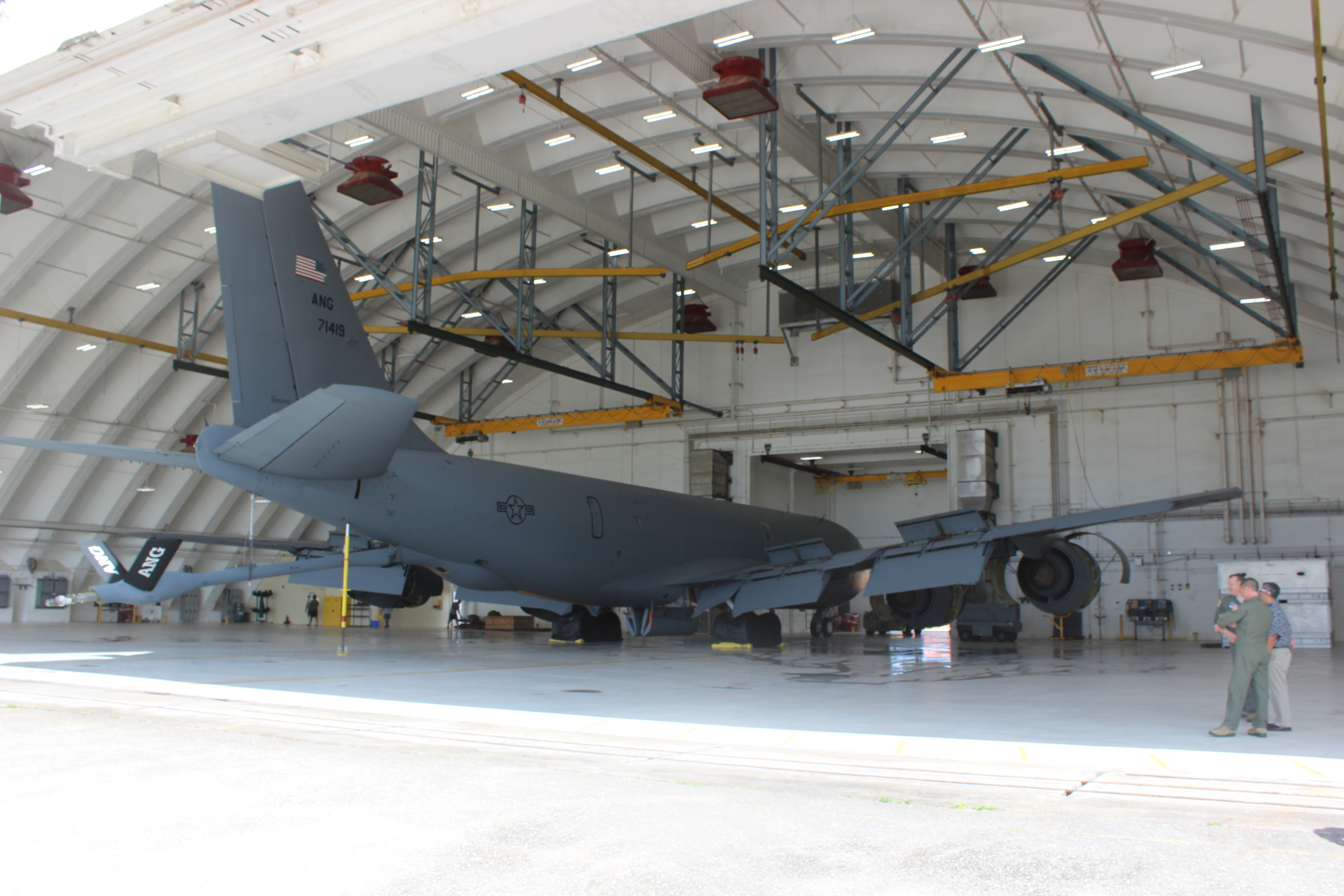KC-135 ?tail number 57-1419, the oldest aircraft in the Air Force's fleet, sits in a hangar at Andersen AFB, Guam, after being washed to remove salt and avoid corrosion. Staff photo by Brian Everstine
ANDERSEN AFB, Guam — Before they can fly the newest air refueling tanker, the airmen with the New Hampshire Air National Guard are refueling aircraft throughout the Pacific in the oldest.
The airmen are flying KC-135R, tail number 57-1419, the oldest Stratotanker—and the oldest aircraft—currently in the Air Force’s fleet. The Block 40 variant of the refueler still doesn’t have modernized avionics unlike the rest of the fleet, but its mission capable rate is high, which is “pretty impressive,” given the operations tempo and environment in Guam, said Lt. Col. Nelson Perron, commander of the 506th Expeditionary Air Refueling Squadron.
“[Guam] is a harsh environment, bringing unique challenges,” Perron said.
The aircraft is one of several KC-135s deployed to Andersen. The others include aircraft from the Nebraska Air National Guard, the Alabama Air National Guard, Active Duty aircraft from MacDill AFB, Fla., and Reserve aircraft from Tinker AFB, Okla. Guardsmen typically rotate through the base every 60 days and fly regularly, Perron said. The aircraft themselves need down days, which is why 57-1419 was parked in a hangar on a recent afternoon to be thoroughly washed to avoid corrosion. The KC-135s at Andersen need to be washed about every 30 days, at least.
The tankers are responsible for supporting the continuous bomber presence at Andersen, regularly topping off thirsty B-52s as they fly both local training missions and longer deterrence flights through the Pacific. They also support “coronet” missions, where they refuel fighter jets that deploy across the Pacific, including F-35s and F-22s that deployed to Kadena AB, Japan. This means flying flights that range up to nine hours long, though that “isn’t all that long” for a tanker, Perron said.
Perron himself said he first deployed to Guam in 2005, and? has been here six times since. “Now we’re flying more missions, and more of a variety of missions,” he said. The mission is “dynamic,” because sometimes tankers surge for large scale exercises, such as Cope North at Guam, or fly support for high-profile missions, such as the B-52’s deterrence flights through the region. Supporting those missions make the airmen “proud, seeing how much people care about this,” said SrA Clare Handy, a maintainer with the 506th EARS, who is at Guam on her first deployment.
The New Hampshire Guard will retire its KC-135s and move on to KC-46s. It’s expected to receive its first Pegasus aircraft beginning next year.

